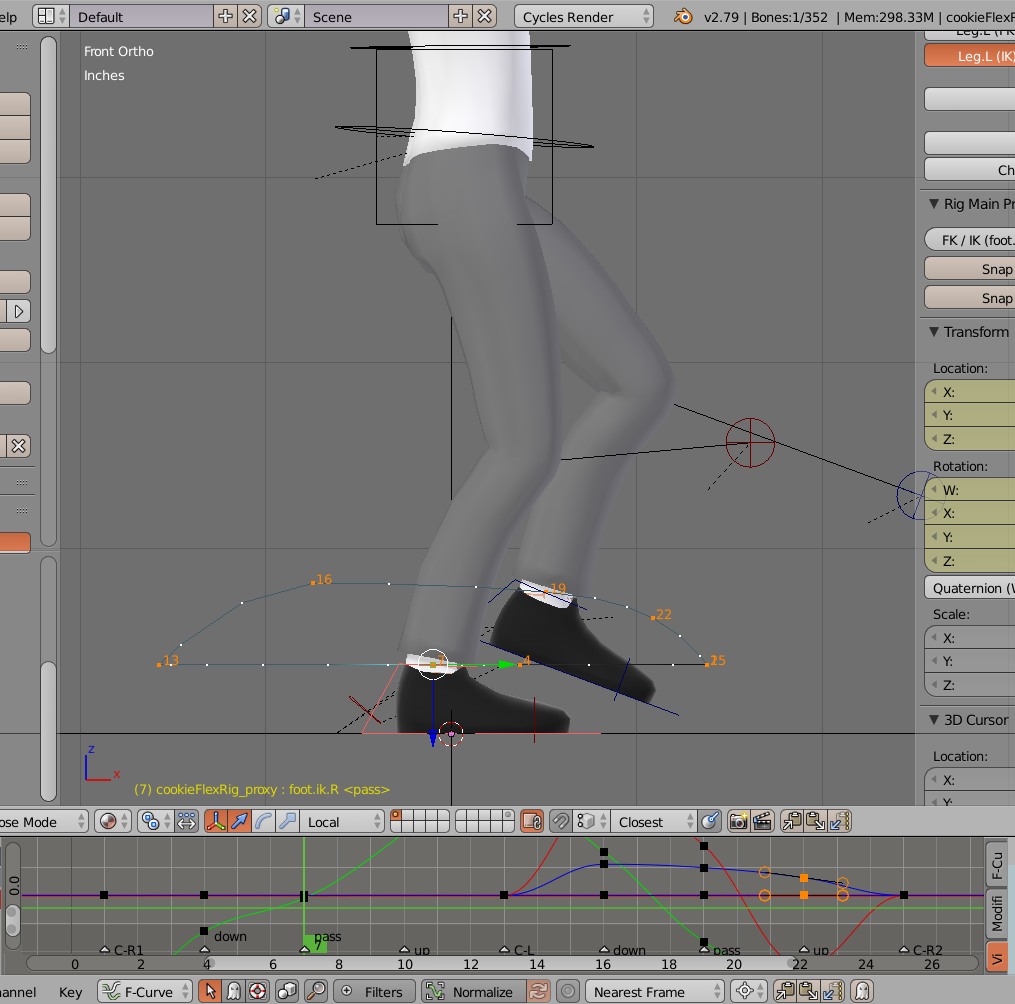@waylow I'm trying to understand how to fix a knee pop, but I can't find any video that covers it.
At the end of part 3 of the Stomp walk cycle, you talk about the next step being to take care of the knee pop, but at the beginning of part 4, you say you've just fixed it (I'm assuming you fixed it 'off screen'). Did you cover this somewhere else?
There is no specific video on this, but the knees will pop when it goes from straight to bend too fast (or vice versa, ie from straight to bent).
The cause can be many things, which you will get better at discovering.
It could be that the heel is raising too much, or it could be because the foot is too far from the hip. Or the hips are too high from the ground etc.
To be able to fix this, you need to develop your eye to recognise the cause and how to avoid it.
(sorry there is no magic answer - but seeing the pop is the first step)
@waylow : I stumbled onto something that seems to help and I'd like to get your opinion.
By accident, I set the passing pose and ended up with the in-the-air foot ahead of the on-the-ground foot instead of behind it (with the knee in front) and it seems (to my eye, anyway) to be like a preemtive strike on knee pops. The foot's motion curve is easily manipulated into an almost perfect arc and the walk seems quite smooth. Here's what this accidental pose looks like (all others being more or less the same as the originals).
Here's a link to the resulting walk cycle (not polished): https://youtu.be/YsRFQ-lejSA

@rontarrant Walks are pretty fun. Once you've got the body mechanics down you can arrange the feet and hips in so many fun ways to bring a character to life. In saying that, for a more vanilla "natural" walk I would be careful putting the lifted foot ahead of the posted foot at passing. Reason being is your spacing. Notice it is even at the back and gets really close toward the front. This is indicating that its slowing down as the foot impacts. Think of the foot like the bouncing ball exercise, as the foot comes down gravity takes over and the foot should have wider and wider spacing. This happens in fewer frames than the bouncing ball but the principles are the same. Take a look at some walking reference as well. The arc of the ankle is usually more S shaped than it is C shaped. (See below). I also noticed on your animation in your down positions, the trailing foot is already lifting off the ground. Try to keep that planted at this point. The down position is not only a way for our bodies to absorb the impact of this controlled fall of a step we just took, but it is also an anticipation. It stores up energy to prepare for the full weight transfer of the passing position to follow. But that foot physically can't move until then or the body would topple over. I hope that makes sense. I made a horribly drawn picture below. Get a little more twist on the hips along the z axis and I think you're well on your way to a clean walk. Keep going man!